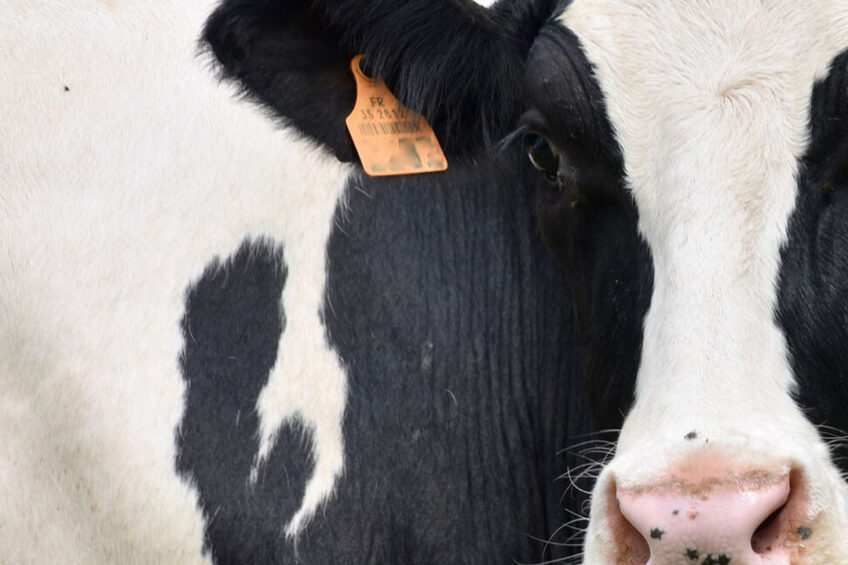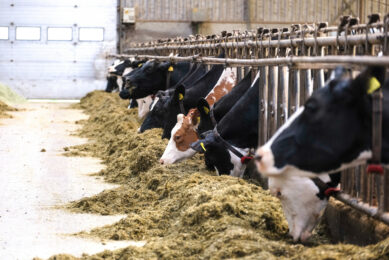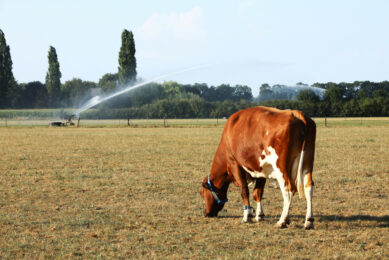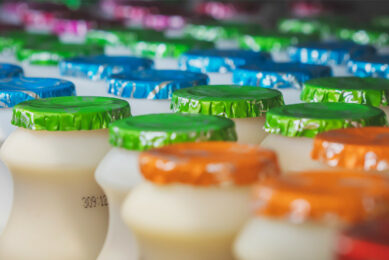Late-gestation heifers and heat stress

Increasing global environmental temperatures have detrimental effects on the dairy industry. While the effects of heat stress on multiparous lactating and non-lactating dairy cows have been studied extensively, the effects on gestating heifers have received less attention.
Heat stress reduces cow milk yield and results in significant economic loss for the dairy industry. Heat stress is experienced by livestock when ambient temperature exceeds the upper critical temperature of the thermoneutral zone, which occurs in lactating dairy cattle when the temperature-humidity index (THI) is above 68. A study shows that the economic loss from heat stress in both lactating and non-lactating dairy cows combined is estimated at more than US$ 1.2 billion in the US.

Exposure to stressors during late gestation (a critical phase of development) could be detrimental to the energy partitioning towards foetal and mammary gland development in gestating heifers. The exponential growth of the foetus, coupled with increased energy demands and simultaneous mammary gland growth add to the overall heat load, decreasing the ability of the heifer to effectively dissipate heat during the late gestation period. Studies show that a greater tolerance for increased environmental thermoneutral zone and less metabolic heat production prolongs the onset of physiological responses to heat stress in dry cows, pregnant heifers and calves but does not prevent them from experiencing heat stress. Researchers from the University of Florida, US, have characterised the effect of late-gestation heat abatement in heifers.
The study
A total of 31 gestating heifers were used to characterise the effect of late-gestation heat abatement on thermoregulatory responses and subsequent milk production of nulliparous Holstein heifers. The heifers were allocated either to a heat stress group (shade of free stall barn) or a cooling group (shade of free stall barn, water soakers and fans) during the last 60 days of gestation. Prior to the study, all heifers were managed in a single group raised on pasture with access to artificial shade.
Heat stress in gestating cows weakens future generations
A recent study investigated the performance and profitability of 2 future generations of cows born to mothers exposed to heat stress during pregnancy. The results show that maternal hyperthermia during late gestation impairs performance of the offspring across multiple generations and lactations.
Heat effects on mammary gland
Research shows that about 48–94% of mammary growth occurs during pregnancy, with most of the growth occurring during the last 2 months of gestation. The developing foetus is also growing at a rapid rate during the last trimester of gestation.
Several studies have shown that heat stress during a cow’s dry period decreases mammary gland growth, resulting in reduced milk yield in the subsequent lactation. Therefore, exposure to stressors during this critical phase of development could be detrimental to the energy partitioning towards foetal and mammary growth in nulliparous heifers.
Adding to that, some studies indicate that heifers born to cows that experienced late-gestation heat stress have lower milk yield during their first lactation, implying that the maternal environment may alter mammary gland development of the offspring; it is not clear if this is only due to a non-genetic modification of prenatal mammary gland development by maternal heat stress.
On-demand: Webinar on heat stress in dairy
How can management help to better be prepared for heat stress? And are there specific nutritional measures to attenuate the effect of hot climatic conditions? These questions were addressed at a recent webinar on heat stress, which is now available for re-viewing on demand.
Thermoregulatory responses
Under heat stress, physiological processes (i.e. respiration rates, sweating rates and core body temperature) are altered to maintain homeostasis. Sweating and movement of blood to the skin surface are major forms of evaporative cooling used to dissipate excess heat. In this study it was found that heifers with access to active cooling during the last 8 weeks of gestation had significantly lower rectal temperature, skin temperature, respiratory rate and sweating rate compared to their heat-stressed counterparts. To assess patterns of thermoregulatory responses, see graphs below. Vaginal temperature was also lower with the cooled heifers compared to the heat-stressed heifers. Respiratory rates and sweating rates had bigger weekly differences compared to other thermoregulatory responses.
Figure 1 – Respiration rate and sweating rate measurements from cooled or heat stressed nulliparous heifers during the last 8 weeks of gestation.

The researchers stated that although their findings accord with results from dry and lactating cows under heat stress, the magnitude of the physiological differences in heifers is less. This was explained by the fact that heifers generate less metabolic heat per unit of surface area and have less heat to dissipate at this stage of life.
The loss of minerals was also assessed in this study. Potassium is the primary cation lost in sweat, while bicarbonate (through panting) and sodium (through urine) excretion also increases in hot climatic conditions, exposing cows to higher risk of respiratory alkalosis. In the current study, heat-stressed heifers had reduced levels of sodium, potassium and chloride compared to cooled heifers. These reductions coupled with increased thermoregulatory responses indicate that heat stress results in loss of minerals.
Growth performance and milk yield
Providing cooling during the last 8 weeks of gestation did not affect growth performance of heifers.
Figure 2 – Milk yield measurements from cooled or heat stressed nulliparous heifers during their first lactation.

Fat yield tended to be higher in the cooled heifers compared with heat-stressed heifers (1.30 vs. 1.18kg/d). Protein yield was higher during weeks 3, 4 and 7–15 in the cooled heifers compared to the heat-stressed heifers. However, overall fat and protein percentage were similar.
In the present study, heifers cooled during the last 60 days of gestation average a 3.9kg/day increase in milk in the first 15 weeks of lactation relative to heat-stressed heifers, indicating that heifers in the cooling group benefited from the active cooling system. Studies show that heat stress can decrease milk production by up to 0.59kg/cow/day with each unit increase of THI above 68.
Magnitude of heat stress
The researchers concluded that their study demonstrates a strong and positive thermoregulatory response of dairy heifers to active cooling with fans and water soakers in late gestation. “Although the magnitude of those responses is less pronounced than that of mature multiparous dry cows, these alterations translate into production improvements post-calving. It is clear that more studies are needed to confirm the production responses, perhaps with larger numbers of animals, and to unravel the molecular and metabolic implications of the observed responses resulting in higher yields,” they remarked.
This article is based on the original article by Davidson B.D., Dado-Senn B., Rosa Padilla N., et al. 2021. Late-gestation heat stress abatement in dairy heifers promotes thermoregulation and improves productivity. Journal of Dairy Science, Vol 104, No. 2, 2021. 10.3168/jds.2020-18998.
Join 13,000+ subscribers
Subscribe to our newsletter to stay updated about all the need-to-know content in the dairy sector, two times a week.










